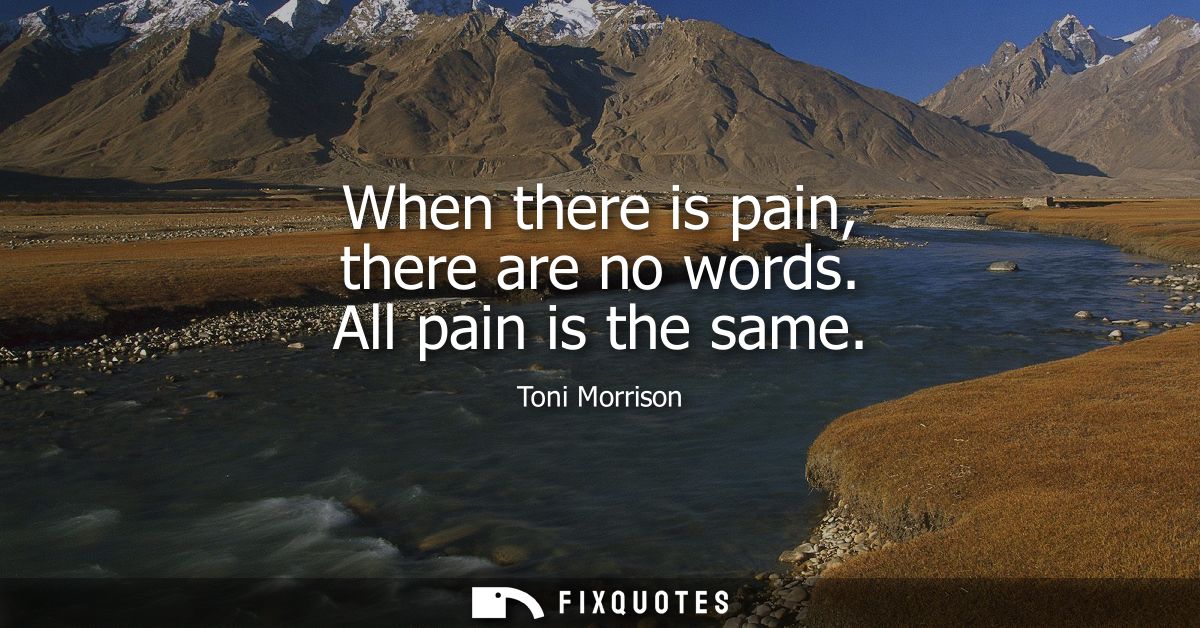"When there is pain, there are no words. All pain is the same"
About this Quote
Toni Morrison’s reflection, “When there is pain, there are no words. All pain is the same,” invites deep contemplation about the essence and universality of suffering. Pain, whether physical, emotional, or psychological, can render a person speechless, stripping language of its power to fully express the depth of feeling. In these moments, words become inadequate, failing to encapsulate the intensity or the texture of agony experienced by an individual. Silence then becomes the only truthful response to true suffering, highlighting a profound limitation in our ability to share or communicate certain human experiences.
The second half of the line, "All pain is the same", underscores the fundamental unity underlying the experience of pain across humanity. Individual circumstances, causes, or intensity may differ, yet pain has a way of leveling differences, creating a silent communion among those who suffer. When stripped of context, the core sensation of being hurt, lost, or in distress is something every person inherently understands, regardless of their background or story. Morrison suggests pain forms a connective thread, a universal language that requires no words, because it is instantly recognizable, deeply felt, and widely understood. By emphasizing sameness, the observation dismantles the barriers erected by culture, language, or life circumstance; the state of suffering exposes our shared vulnerability, our common need for empathy, and the simple truth that at our core, suffering is an inescapable part of the human condition.
In acknowledging the incommunicability of real pain, Morrison also testifies to its power to isolate, as sufferers confront the limits of others' understanding. Yet, precisely through this speechless universality, pain paradoxically brings people together. When we see or sense another’s anguish, we know it, without explanation. The lack of words thus becomes not only a symbol of individual suffering but also a bridge to collective compassion and recognition.
About the Author

